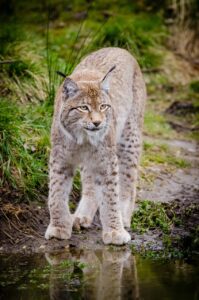No products in the cart.
Fun Facts
The Resurgence of Outdoor Photography: Capturing Nature’s Grandeur in a Digital Age
 The Resurgence of Outdoor Photography: Capturing Nature’s Grandeur in a Digital Age
The Resurgence of Outdoor Photography: Capturing Nature’s Grandeur in a Digital Age
In an era where screens dominate our lives, outdoor photography emerges as a compelling antidote, a tactile experience that rekindles our connection with the natural world. This art form, far from being a mere pastime, has burgeoned into a cultural phenomenon, a collective endeavor to encapsulate the ineffable beauty of our planet.
The camera, once a cumbersome apparatus, has undergone a metamorphosis, evolving into a sleek, portable device. This transformation democratizes the art, allowing novices and experts alike to venture into the wilderness, lenses poised to capture fleeting moments of natural splendor. The digital age, often criticized for distancing us from our environment, paradoxically enhances our ability to document it. Advanced software imbues even smartphone snapshots with a professional sheen, while social media platforms act as digital galleries, showcasing a plethora of perspectives.
But what fuels this surge in popularity? The answer lies in a confluence of factors. First, the escalating climate crisis amplifies the urgency to chronicle the world’s vanishing landscapes. Photographers serve as visual historians, their images a poignant reminder of what stands to be lost. Second, the pandemic, with its enforced isolation, has engendered a collective yearning for open spaces, a desire that finds expression through the lens. Finally, the proliferation of online tutorials and resources equips aspiring photographers with the tools they need to elevate their craft.
Yet, the art is not without its ethical dilemmas. The quest for the perfect shot sometimes tramples on the very nature it aims to celebrate. Fragile ecosystems suffer under the weight of human intrusion, urging a reevaluation of the photographer’s role. Should they remain passive observers or become active stewards of the environment? This question looms large as the community grapples with its impact.
Moreover, the democratization of photography engenders its own set of challenges. The deluge of images flooding social media risks diluting the art form, reducing it to mere pixels in an endless scroll. How then does one distinguish the evocative from the ephemeral? The answer may lie in storytelling. A photograph transcends its frame when it narrates a tale, when it provokes thought, incites emotion, or instigates action.
Outdoor photography, then, serves a dual purpose. It not only documents the world but also interprets it, offering a lens—both literal and metaphorical—through which we can reexamine our relationship with the environment. As this art form continues to captivate a global audience, it carries the potential to inspire not just admiration for the natural world, but also a commitment to its preservation.



